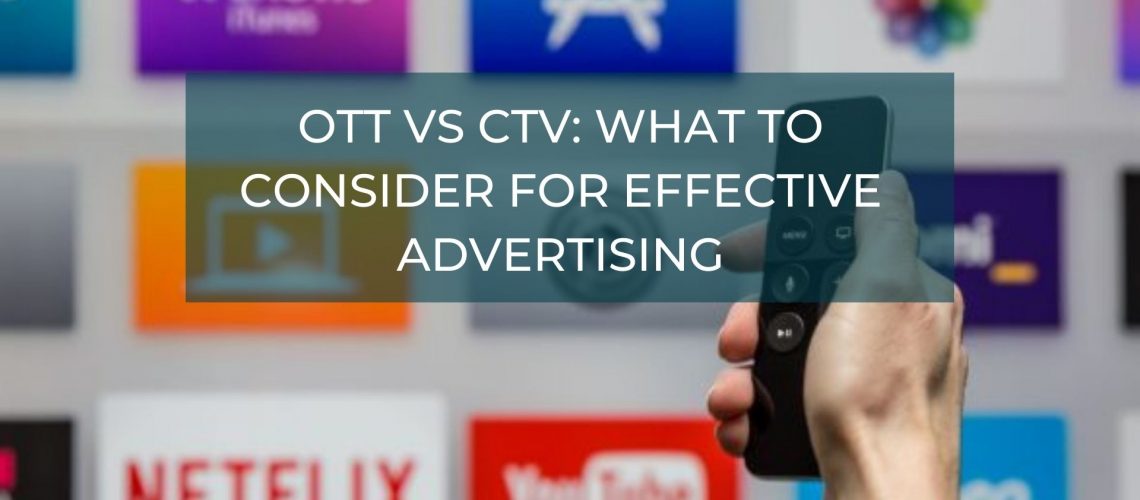Ever since the onset of the pandemic in 2020, a wave of consumers are flocking towards streaming online videos and abandoning traditional cable TV. In just two years, 28% of global consumers are watching more live video content and 63% of their time is spent on streaming online, much more than cable, broadcast or satellite. But most of us are still confused about what OTT vs CTV entails.
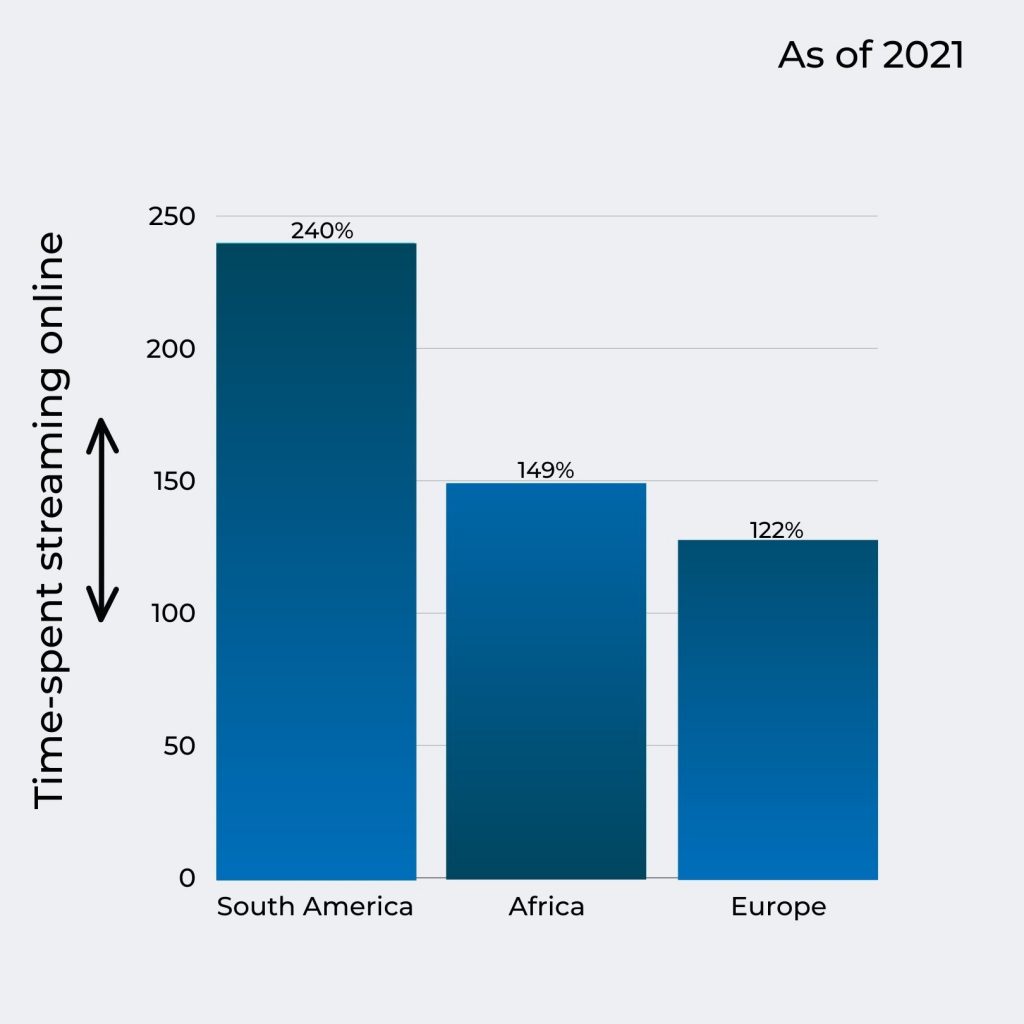
It’s the age-old phenomenon that where consumers go, marketers follow. Charged by impressive trends, TV advertising has massively switched gears to OTT and CTV. It’s now more important than ever for marketers to understand, and capitalize on OTT and CTV advertising to impress target customers, boost ad engagement, and ultimately increase returns on ad spend.
In this article, we give you a brief of OTT vs CTV and discuss important factors to consider for effective OTT and CTV advertising campaigns.
Related: CTV for Advertisers: Fraud, Attribution, and Strategies | Podcast #1
OTT vs CTV
Though marketers use the two terms interchangeably, there are fundamental differences between OTT vs CTV that shape the role they play in advertising strategies. Let’s take a look.
What is OTT?
Over-the-top or OTT refers to online video content that appears on mobiles and desktops or connected TVs. Instead of watching what’s on cable or satellite TV, consumers can now stream anything they want to watch, anytime, anywhere. This convenience entices consumers to switch to OTT from scheduled TV. Near the end of 2020, consumers streamed 240 billion hours of videos across the world with 65% of total streaming time spent on mobile and TV apps.
There are three main types of OTT on-demand video that consumers commonly watch:
- Advertising-based (AVOD) that is available for free, e.g. YouTube non-premium
- Subscription-based (SVOD) that consumers pay a monthly fee, e.g. Netflix, Hulu
- Transactional (TVOD) that consumers purchase on a pay-per-view basis, e.g. Amazon Prime videos
What is CTV?
Connected TV or CTV refers to devices that you can connect to the internet for consumers to watch OTT content on big screens. This includes smart TVs that automatically connect to the internet and external devices such as Chromecast, Apple TV, Roku Box, and game consoles that broadcast online videos on traditional TVs. Note here that CTV doesn’t include mobiles and desktops, as they’re not considered as big screens. Consumers usually have to pay a one-off fee to purchase these devices, on top of the monthly subscription or transactional fees for OTT content.
In short, here are three key differences between OTT and CTV:
- OTT means content, while CTV means devices.
- You can view OTT content on CTV devices as well as desktops, laptops, mobile phones.
- OTT is either free, subscription-based, or pay-per-view, while CTV devices are one-off purchases.
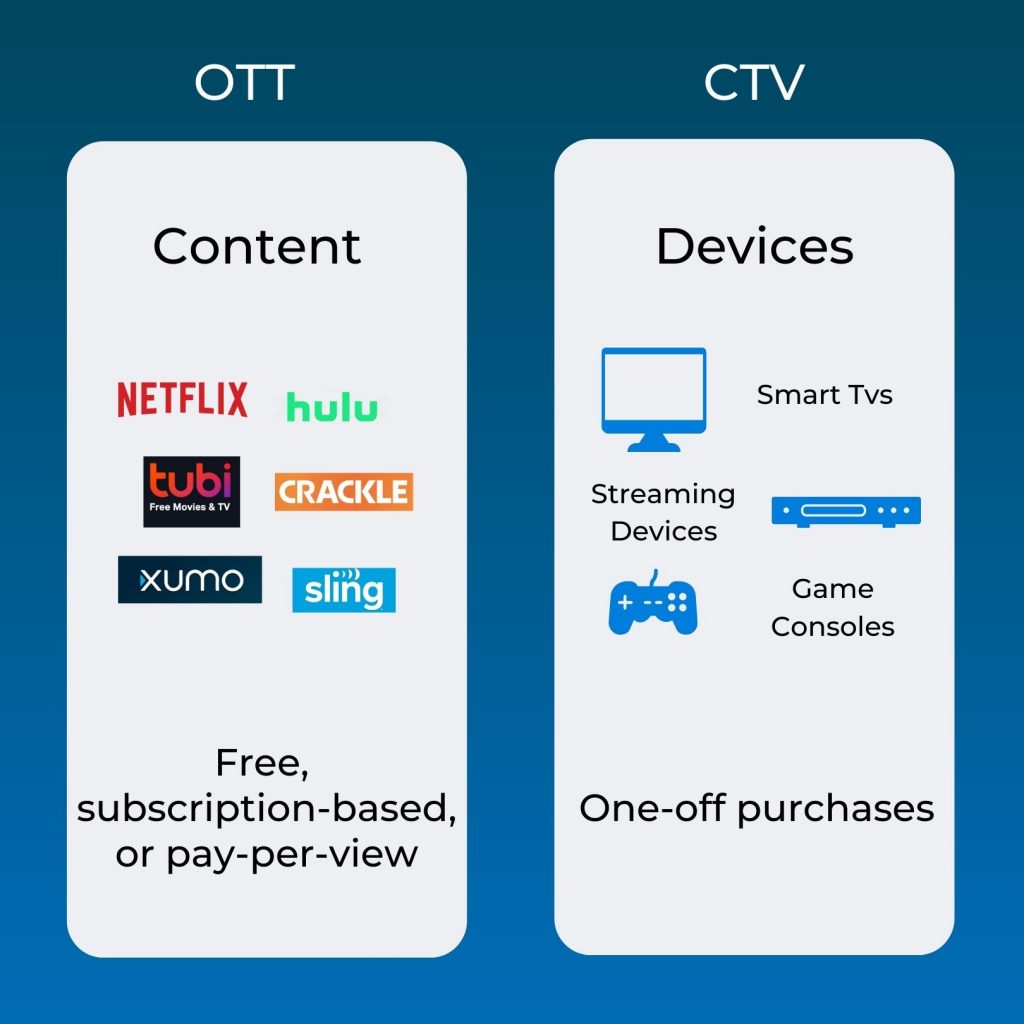
How does OTT and CTV advertising work?
OTT and CTV platforms provide massive opportunities for marketers to advertise on. In 2021 alone, ad spend on CTV in the US was up by 59.9% to 14.4 billion and is expected to grow up to $29.5 billion by 2024. But how does it work exactly?
The answer is programmatic advertising – the process of automatically buying and selling digital advertising space. Marketers can place programmatic ads during, before or after online videos. Consumers then view this content on either CTV devices (e.g. Smart TVs), mobile phones, or computers. Some good examples of this are:
- Ads that pop up on YouTube videos without a premium membership
- Ads that appear before, during or after a movie or a TV show on Hulu’s ad-supported plan

Image from MyBasis
With OTT TV and video subscriptions expected to grow to 2 billion by 2025 globally, marketers can access millions of audiences through CTV advertising and pick and choose those that fit their ideal buyer personas. For this kind of granular niche targeting, audience segmentation is key. Global audience segments at scale will boost the success of marketers’ programmatic ad campaigns.
What to consider for OTT and CTV advertising campaigns
When planning strategies for programmatic advertising OTT and CTV advertising, marketers must understand and take into account three key nuances to reach the right audiences in the right market and boost return on ad spend:
1. Leveraging programmatic advertising
Traditionally, if marketers want to reach national and global audiences, they turn to linear TV advertising, but this can be very expensive. For those who can’t afford or don’t wish to spend a hefty sum on linear TV advertising, programmatic advertising offers the same scale of audience, while also being relatively cost-effective.
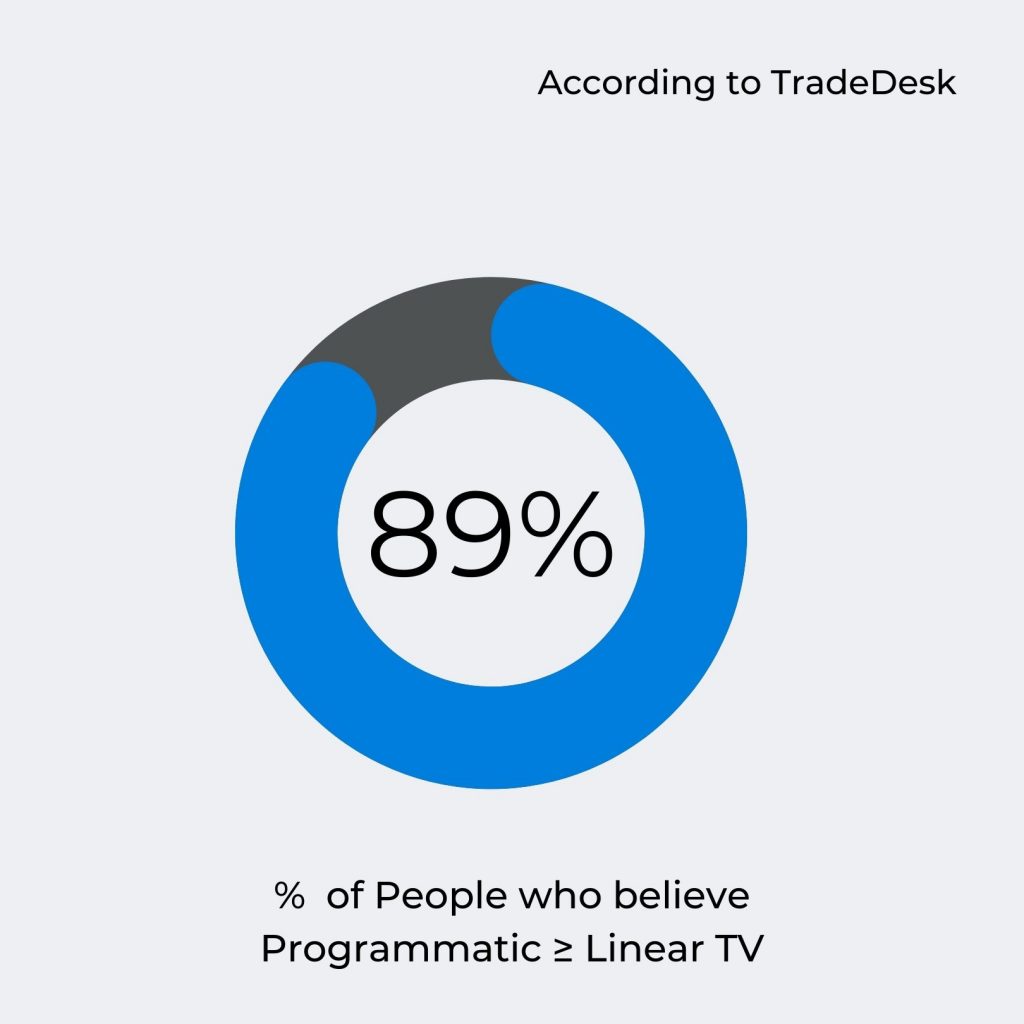
Starting from 2020, most marketers are switching over to programmatic from linear TV advertising. According to TradeDesk, 89% of them believe that programmatic is just as effective, if not more, than linear TV. By the start of 2021, eMarketer reported that advertisers could reach 84 million users through connected TV devices, while fewer than 74 million US households own a cable TV.
If marketers want to reach modern consumers at scale, programmatic CTV advertising seems to be the future holy grail.
2. Picking the right device: connected TVs vs mobile phones
Another consideration is your target market and the most popular device in that market. Most consumers in the US market are connected-TV-users, while those in APAC, especially South East Asia and China, are mobile-first. This means that APAC consumers tend to consume OTT content on their mobile devices, rather than on CTV devices.
Consumers in the US spend 81% of online video viewing time on CTV devices while those in Asia spend only 11% on CTV and 84% on a combination of mobile phones and desktop. Part of it has to do with culture, part of it with the fact that CTV devices can be expensive, and may not be readily available in every country.
If you’re targeting US consumers, opt for CTV advertising that is more suitable for big-screens. If you want to reach and engage APAC consumers, mobile-friendly OTT advertisements offer better return on your advertising spend.
3. Advertising on the right content
CTV advertisements usually appear on YouTube videos (AVOD) or ad-supported plans on subscription services (SVOD). But lately, consumers are experiencing “subscription fatigue” with services like Netflix and Hulu. In fact, an average American household owns nine paid subscriptions and 53% feels frustrated about this. The subscription-content industry in APAC countries, such as Singapore, is also saturated, offering limited opportunities for marketers to advertise on these platforms.
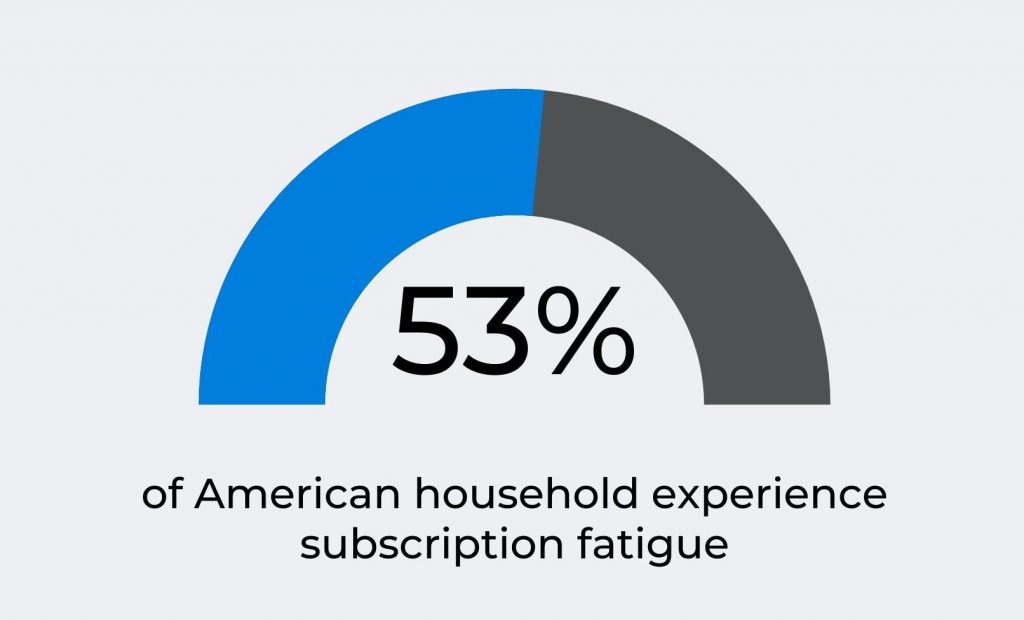
Consumers are now shifting towards advertising-based videos such as YouTube and Facebook, which don’t require subscriptions. In 2021, total viewership share of AVOD platforms rose by 9.3% while SVOD viewership dropped by 8.6% in the US. AVOD is also booming in APAC, making up 50% of total OTT content viewership. There are also plenty of growth opportunities in Malaysia, Thailand, Indonesia, Vietnam, and India where AVOD programs are greatly favored.
That’s fantastic news for marketers because of one simple reason: consumers can pay more to avoid ads on SVOD, while ads are non-negotiable on AVOD (except when consumers upgrade). Marketers can now advertise on AVOD programs and reach more consumers in the US and APAC.
Conclusion
In this article, we gave you an overview of OTT vs CTV and what you should consider for effective advertising strategies and campaigns. As video consumption continues to grow, marketers should think through cross-channel strategies alongside display and social strategies. OTT and CTV are just two components of this, albeit important ones.
For an effective omnichannel strategy, marketers first need to know exactly who their target audience is and what they like before deciding on the advertising method. Data vendors that offer global, accurate, and high-performing audience segments are key to nailing this down.
AlikeAudience offers over 7000 audience segments in 13 countries across the globe, including US, Hong Kong, Indonesia, Japan, and Australia. We create our segments from matching exclusive credit card transactions fromwith opted-in IDs from 1.1billion unique mobile devices, offering scale and quality. Our audience segments are 90% accurate (validated by Nielsen Digital Ad Rating), 100% device agnostic, and CTV-ready. Our data strategists are ready to work with you to boost return on ad spend on your CTV advertising campaigns.
Check out our comprehensive guide on CTV advertising and learn more about:
- • Choosing the right data vendor
- • Developing ads your audience will engage with, and
- • Addressing privacy concerns in the CTV advertising space.

